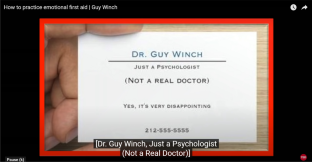Exploring TED Speakers’ Narrative Positioning from a Strategic Maneuvering Perspective: A Single Case Study from Winch’s (2014) TED Talk
Abstract
TED Talks are still an unexplored genre of argumentation in which narrative arguments are often used in TED speakers’ strategic maneuvering to support a standpoint. In the present study, I combine the constructs of narrative positioning (NP) and strategic maneuvering (SM) to offer a conceptualization of how narrative is used in pragmatic argumentation as well as provide an exemplary analysis of a specific case of narrative arguments that were used in Winch’s (How to practice emotional first aid. https://www.ted.com/talks/guy_winch_the_case_for_emotional_hygiene.2014, 2014) TED Talk. The proposed integration aims to provide a theoretical framework and empirical tools for reconstructing narrative arguments through connecting the underlying formal structure of narrative with aspects of TED speakers’ strategic maneuvering. Drawing on NP and SM constructs, the critical analysis explores how Winch’s narratives or “small stories” were strategically manipulated to support his stance with regard to the importance of mental health and to examine whether or not the use of narrative arguments as argumentation moves helped to enhance the dialectical reasonableness and rhetorical effectiveness of Winch’s argument. The analysis shows that the macro context and the knowledge gap between TED speakers and the audience makes the use of narrative arguments extremely effective. Although narrative arguments often receive criticism about their validity in providing sufficient evidence for a standpoint, their dialectical power lies in the flexibility of describing events in different fashions to draw pragmatic inferences that support the speaker’s stance. The study fills an important gap in the literature as it integrates recent approaches in narrative theory in the reconstruction and evaluation of narrative arguments in TED Talks.


 求助内容:
求助内容: 应助结果提醒方式:
应助结果提醒方式:


